Why you need protein
If you’re hoping to lose weight, build muscle, or just have more energy to power you through your day, a high-protein diet may be able to help. “Protein plays a wide number of roles in the body,” notes registered dietitian Kelly Pritchett, PhD, an associate professor in nutrition and exercise science at Central Washington University in Ellensburg, WA. “From cellular growth and repair to creating enzymes, helping with fluid and electrolyte balances and forming antibodies, protein is crucial.”
Just know that the plans come with a few caveats, namely they can add a lot of fat to your diet while eliminating healthy fruits and vegetables. The increase in protein can strain your kidneys, as well, which is why you should consult with your doctor before adopting a high-protein eating plan.
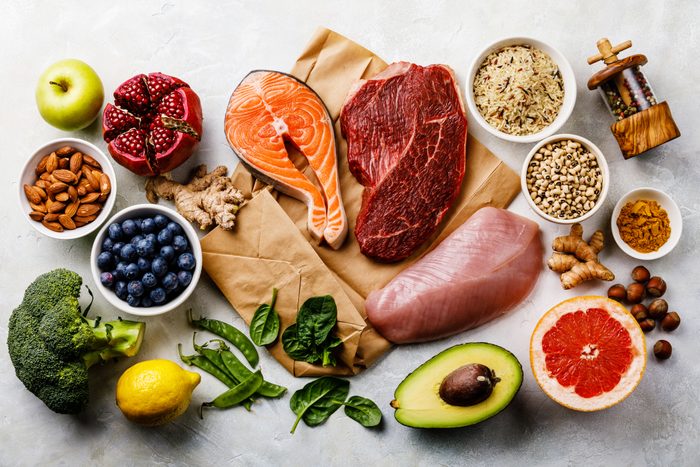
The advantages of a high-protein diet
For people trying to shed some extra pounds, focusing on more protein could help with weight-loss goals. “You’ll shift more of your weight loss toward body fat and protect your lean muscle mass,” explains Roger E. Adams, PhD, a nutritionist and weight-loss consultant based in Katy, TX, and the owner of eatrightfitness.com. Research published in 2015 in Trends in Food & Science Technology found that protein has a satiating effect. “It takes a longer time for your body to break down and digest most protein, so it delays your appetite and keeps you feeling fuller, longer,” says Adams.
Read on to find out if a high-protein diet is right for you and, if so, how to get started. Just make sure you don’t overdo it—these are the signs that you’re eating too much protein.
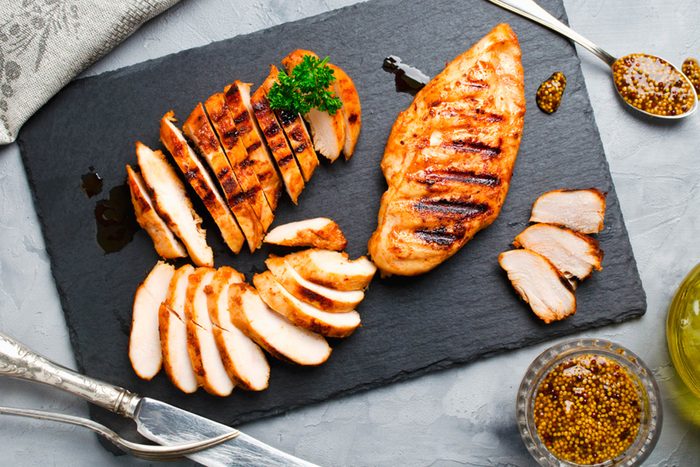
Get the right amount of protein
High protein can mean different things to different people. The recommended daily allowance (RDA) is .8 grams of protein per kilogram (2.2 pounds) of body weight. For a 150-pound person, that’s about 55 grams a day. But protein diet advocates believe that number may be too low, especially if you are trying to lose weight. “If you are dieting and/or you are physically active, that number should be significantly higher,” says Adams.
A good rule of thumb is to aim for .8g to 1g of protein per pound of body weight, advises Adams. For a 150-pound person, that’s 120-150 grams of protein a day. If you eat three meals a day plus two snacks, that averages about 25 to 30 grams every time you eat. Or you can calculate protein as a percentage of your total calories—plan to get 20 to 35 percent of your total daily calories from protein. And check out some of the best protein diet foods for weight loss, while you’re at it.
Free apps like LoseIt and MyFitnessPal make it easier to keep tabs on what percentage of your calories are coming from protein (or how many grams you are eating with each meal).
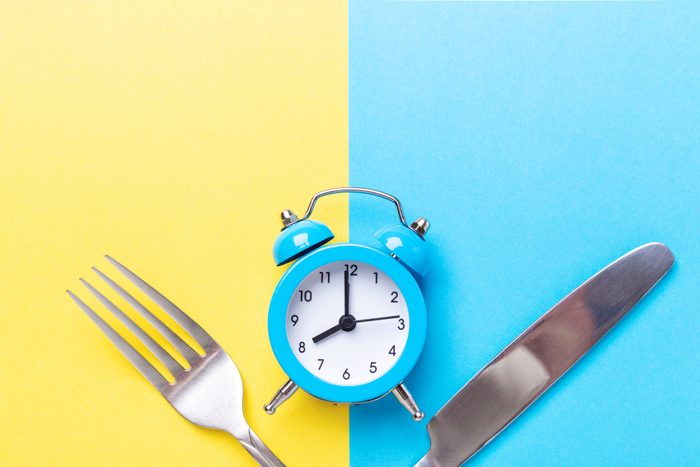
Watch your protein timing
“We often tend to backload our protein needs, or have more protein at the end of the day,” says Pritchett. But you’ll find it easier to eat protein throughout your day. Aim to get 15 to 20 grams (or up to 40 grams if you are bigger or more active) at small meals every three to four hours. “You may want to have more protein at larger meals and less protein at smaller ones,” says Pritchett. This will help keep you feeling full and allow your body to use the protein more efficiently. Here are the high-protein snacks nutritionists actually eat.
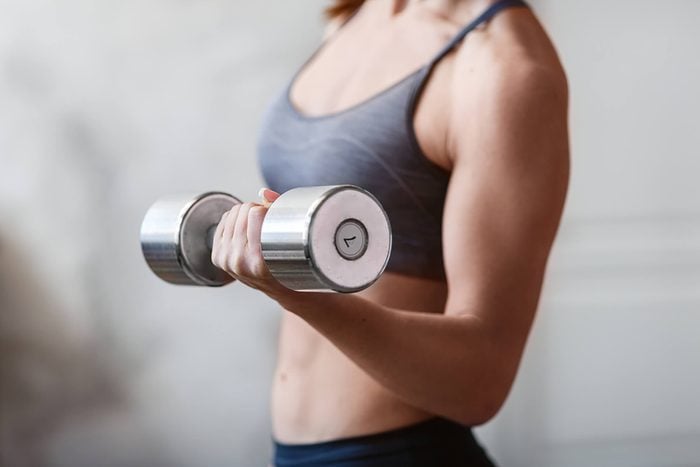
Add strength training
“When you keep protein intake higher it helps with any loss of muscle tissue,” says Pritchett. Since muscle burns more calories at rest than fat, you’ll keep your metabolic engine revved even as you lose weight.
That’s especially important when you are older since we tend to develop an age-related muscle loss starting in about our 30s. “Older adults, especially, need to pay attention to their protein meals and make sure they are getting enough throughout the day,” adds Pritchett.
Of course, including regular strength training will also help keep your muscles strong. You don’t even have to go to a gym to start building muscle—these at-home exercises will also do the job.

Eat protein after you exercise
Whether you like to run, swim, bike, lift weights, or just walk, you need adequate protein in your diet. “The amino acids, or building blocks of protein, are what make up your muscles, and when you exercise that muscle gets broken down and must be replaced,” says Adams. So it’s a good idea after exercise—especially weight lifting—to have a small snack that includes some protein. “Ideally you’re having some protein in a two-hour window after a workout since that is when your body has an elevated muscle protein synthesis rate—it starts to put together the new muscle tissue,” he explains.
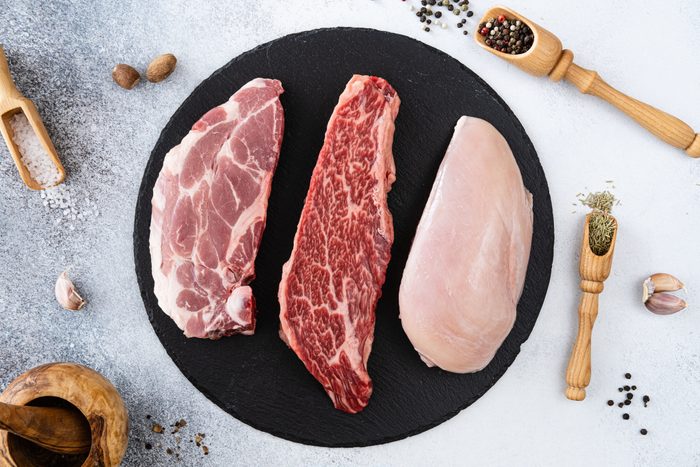
What to eat: Meat and poultry
What you eat on a high-protein diet is highly individual, but there are some choices that are better than others. “Animal products like meat, fish, poultry, dairy, and eggs tend to give you more protein per gram than plant-based sources,” says Pritchett. These foods are considered complete proteins, meaning they contain all of the essential amino acids necessary for your body to function. Steer clear of higher-calorie choices like fatty cuts of meat if you are watching calories. Chicken, of course, is often a go-to option for those on a high-protein diet, with 27 grams in a three-ounce serving.
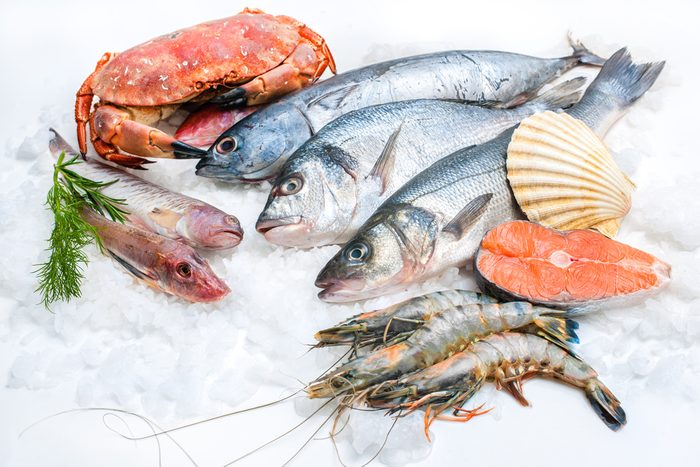
What to eat: Fish, seafood
Fish is also a good option for high-protein diets. Many types of fish are packed with protein and contain healthy fats like omega-3 fatty acids. Both tuna and cod, for example, have about 20 grams of protein in 3 ounces, at less than 100 calories. More of a seafood fan? Pick up some shrimp: 3 ounces of shrimp has 17 grams of protein at only 90 calories; it’s also rich in vitamins, minerals, and antioxidants. Here’s more on the best fish to eat (and which to avoid).
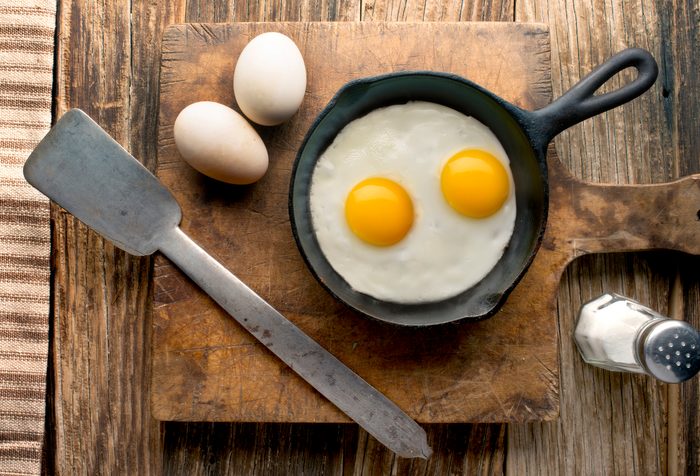
What to eat: Eggs
For those who prefer avoiding meat, poultry, and fish, or are just looking for other options to keep protein levels high throughout the day, eggs are a great option. Eggs are one of the easiest foods to prepare—and easiest to digest—with 6 grams per 1 large egg. They’re also rich in disease-fighting antioxidants, including choline, lutein, and vitamin D. And there’s no shortage of fantastic egg recipes.
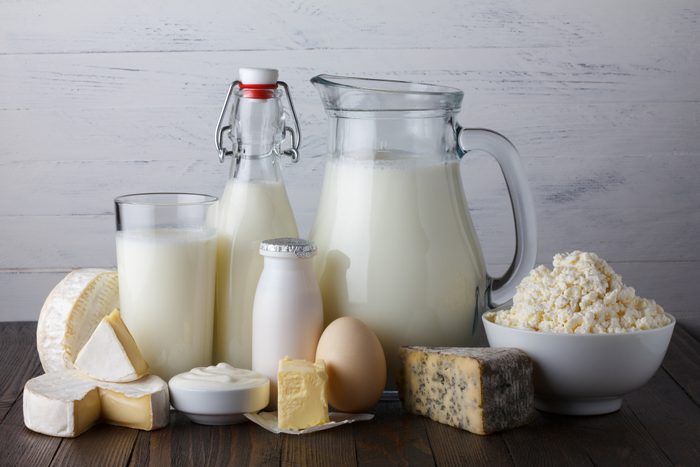
What to eat: Dairy
Dairy is a favorite option for high-protein foods because it’s relatively easy to find and there’s nothing to prepare. Greek yogurt, for one, has 15 to 20 grams in a typical 6-ounce container—about the same as 2 to 3 ounces of lean meat. (Regular yogurt has less than half that amount.) And a cup of 1 percent milk has 8g of protein, while a half cup of cottage cheese has 15 to 20 grams. When choosing dairy, it’s ok to have a little fat, says Adams. “Some fat—less than 2 percent— will help give you more satiety and help you feel fuller, longer,” he notes. “But just a little fat goes a long way.” Of course, dairy products like milk, yogurt, and cheese also provide ample calcium and vitamin D to help you build and maintain strong bones.
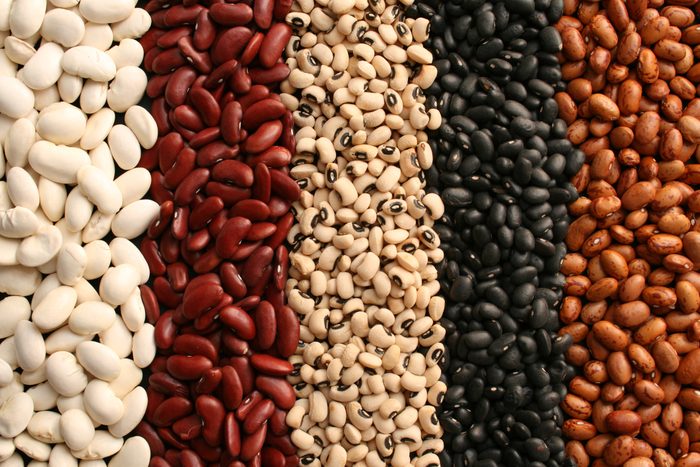
What to eat: Plant-based proteins
Even vegans who avoid all animal products can follow a high-protein diet. You can find ample amounts of protein in beans and legumes. Consider lentils, which have about 9 grams of protein in a half-cup, or chickpeas, which have more than 7g in a half-cup. Nuts and seeds are also key: A 1-oz. serving of almonds (about 23 nuts) have 6 grams of protein while an ounce of walnuts (14 halves) has more than 4 grams. And don’t forget soy. “It’s the only complete plant-based protein that has all of the amino acids you need,” says Adams. You’ll get 10g of protein in a half-cup serving of tofu and 8.5 grams of protein in a half-cup of edamame. Here are some more vegan protein sources to try.
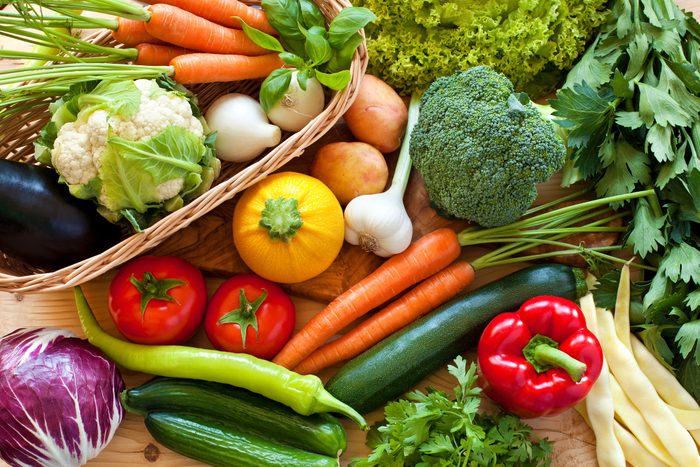
Don’t forget your veggies
When you are on a high-protein diet it can be easy to crowd out vegetables, especially if you are also trying to cut down on carbs. But don’t ignore leafy greens, cruciferous veggies, and other healthy foods. You’ll not only be taking in plenty of fiber—crucial for both weight loss and for helping to keep your digestive system functioning at its best—but also getting important micronutrients such as key vitamins, minerals, and disease-fighting phytonutrients. All-star choices include spinach, kale, broccoli, Brussels sprouts, asparagus, cauliflower, and lettuce.
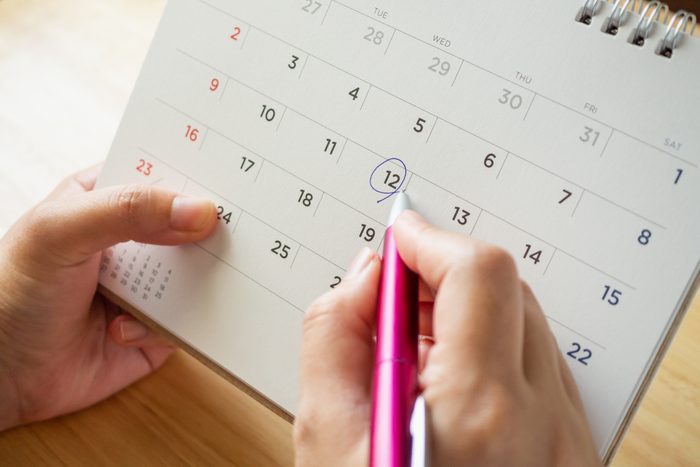
Take it slow
If you’re not used to eating a high-protein diet, it’s a good idea to gradually increase how much protein you are getting over the course of a day. “All macronutrients are controlled by the pancreas,” notes Adams, “It can take three to five days for your pancreas to adjust to changes in the diet.” If you increase levels too quickly—say, go from 50 to 150 grams daily—you are likely to experience some dietary distress, including gas and bloating, he adds. Eating these 7 foods rich in natural probiotics can help keep your digestion on track.
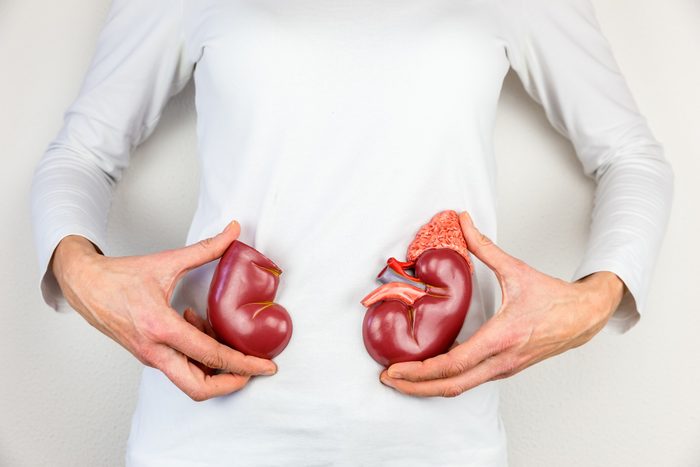
Kidney concerns
While some experts worry that too much protein could overload the kidneys, more recent research in the Journal of Nutrition suggests that people with healthy kidneys should be fine when following a high-protein diet. In fact, evidence shows higher protein can actually increase kidney function. However, if you have existing kidney disease you should avoid a high-protein plan; the increased strain could worsen your condition. If your kidneys are healthy and you need ways to boost intake, check out these 35 ways to sneak more protein into your diet.

